The Top 10 Reasons for Investing in Better Safety Shoes
In 2023, at one Japanese automotive firm, an experiment was carried out to analyse and assign each worker with exactly the right shoe. Each subject’s postural condition and work activities were assessed, and a suitable footwear model was suggested. Only a year later, re-evaluation showed significant improvement in posture linked conditions, a high percentage of satisfaction with the comfort of the footwear, and a significant reduction in requests for a change of footwear or orthotic insoles.
According to expert research, 1 in 3 people who wear safety shoes for work have one or more footwear problems. Failure to cater for these issues is resulting in slips and trips, posture and joint issues and a worsening of existing medical conditions. It is no exaggeration to say that poorly fitting or unsuitable shoes lead to costs of around £500M per year, including damages, admin costs, insurance, equipment damage, production delays, staff shortages, accident investigations and loss of brand value.
We’ve pulled together 10 reasons you might want to ensure that your workforce have access to the correct safety shoes, starting with the obvious ones but moving on to reasons you may not have considered yet…
1. Environment
Protection from the working environment is one of the most obvious reasons for needing safety shoes. Falling objects, cuts and punctures, extreme temperatures and electrostatic build up are just some of the environmental factors which can cause an accident.
Look for: Robust, water-resistant materials, composite toecaps and midsoles to prevent penetration, antistatic properties.
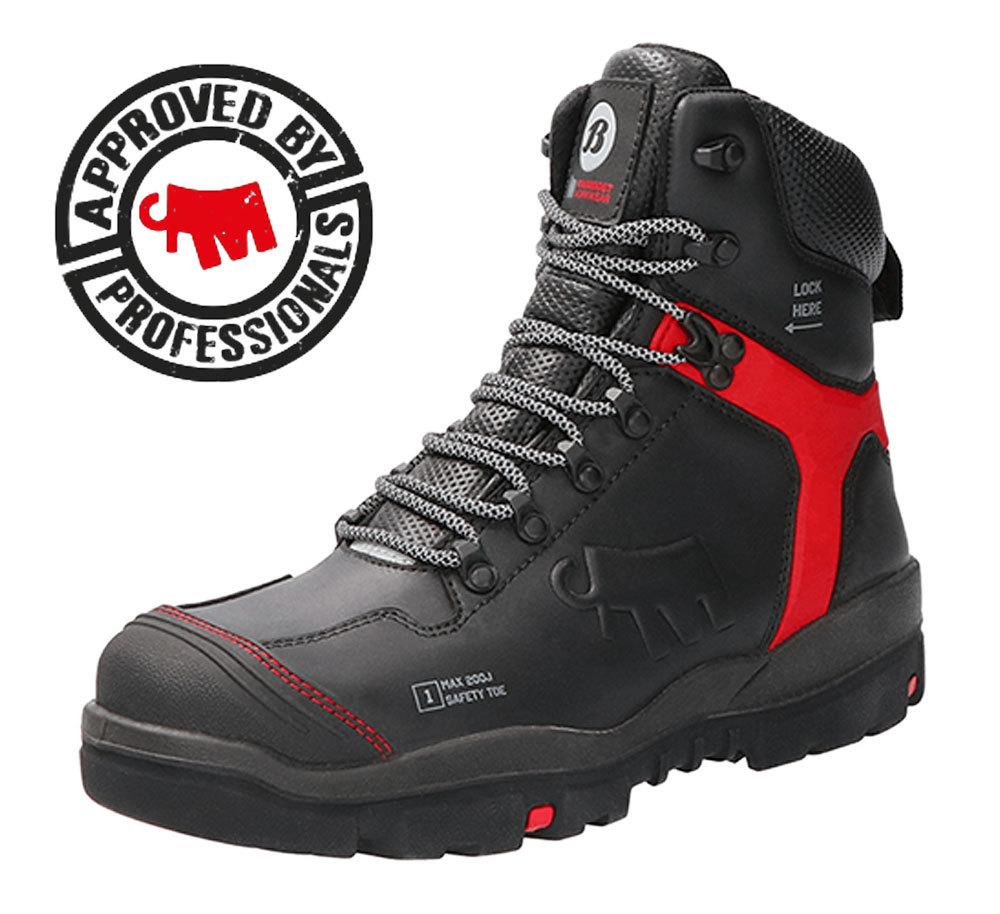 |
Black Mammoet Anchor Sport Ankle Boot with Composite Midsole
This highly durable waterproof boot has been developed in a super-partnership between two premium brands, both expert in high hazard safety...
[View product] |
2. Slips, trips and falls
40 % of workplace injuries are caused by slips, trips and falls, with huge ramifications in terms of lost time, production delays, personnel costs etc, etc. Wearing the right shoes for hard, soft, rough, smooth or uneven surfaces and for the slipping agents that might be encountered such as grease, oil, water and detergents, will reduce the number of these unnecessary accidents.
Look for: Slip resistance – the maximum available is SR3 – tested on various combinations of liquids and surfaces.
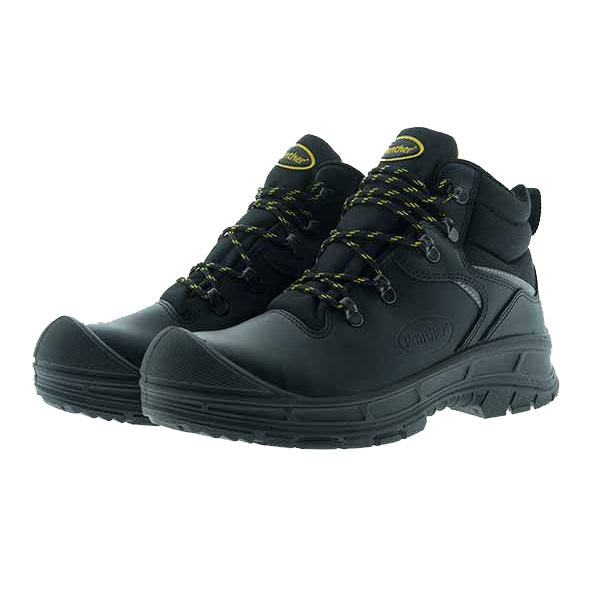 |
Black Panther Waterproof Leather Safety Ankle Boot With Composite Midsole
Amazing comfort from an amazing boot. This boot has everything you need from safety footwear including a breathable waterproof membrane, fantastically supple full grain leather uppers, heel shield, torsion-prevention shank and a heat resistant PU/rubber sole...
[View product] |
3. Wide feet/unusual shapes
Fitting of a shoes is a key factor in comfort – allowing enough space for blood circulation and muscle movement, while not slipping and causing sores or blisters. In studies it was found that 60% of shoes actually have a banana shape which causes foot problems. The shape and fit of your shoe contributes significantly to comfort levels, and consequently to safety.
Look for: Varied width fittings to fully accommodate wide feet, built on a straight last (foot mould) for a natural fit.
.jpg) |
Bata Enduro Derby Extra Wide Ankle Boot
The Bata Walkline range is one of Anchor’s best sellers. Indeed 94% of people report Walkline is more comfortable to wear throughout the day and a 60% reduction in foot and knee problems with Walkline shoes...
[View product] |
4. Male/female feet
Male and female foot shapes have significantly different proportions. Men's feet tend to be longer and broader, wider all the way from toe to heel. Women's feet, on the other hand, are generally narrower, with a higher arch and a wider forefoot compared to their heel. For this reason, women find that sized down men’s shoes are not as supportive and comfortable as a shoe designed specifically for a woman.
Look for: Shoes designed on a gender specific last.
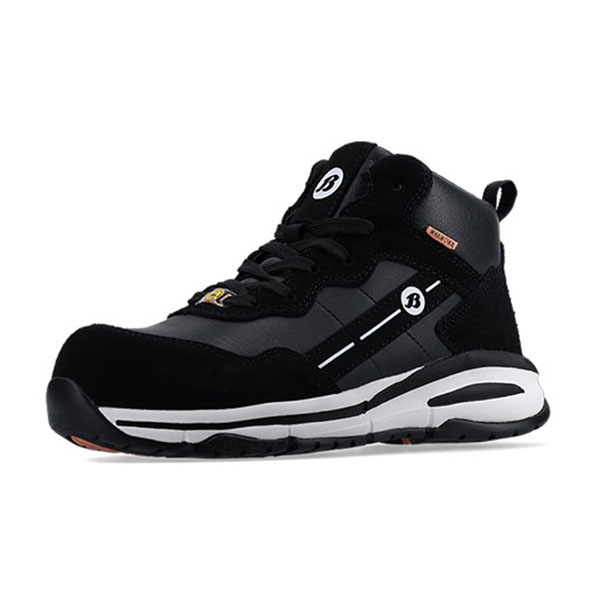 |
Bata Whawowa Black Ladies ESD Trainer Boot
This ultra lightweight low-cut safety shoe has been designed by safety shoe experts, Bata Industrials, with a fit specifically designed for women. The fuel, oil and heat resistant rubber outsole offers a great balance between energy return, shock absorption, and stability...
[View product] |
5. Back problems
Industry workers walk an average of 900km in their safety shoes each year so it’s not surprising that back problems are so common. You might however be surprised that wearing the correct supportive safety shoes could reduce stress on the spine, reduce back pain and improve posture.
Look for: Ergonomically designed shoes. Avoid locking the foot tightly against the instep, instead opt for fastening systems which will allow the midfoot to move freely and enable natural shock absorbency. Stability and support will hold the foot in the correct position but should not prevent flexion, rotation and movement.
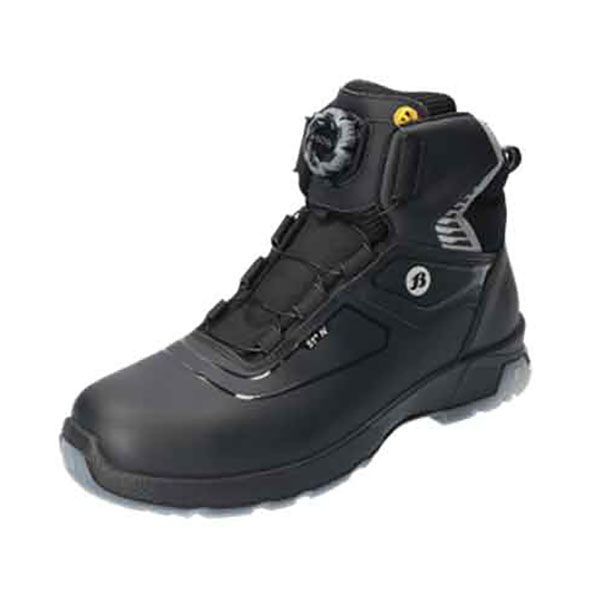 |
Black Bata Summ Safety trainer boot with composite midsole
SUMM+ FIVE is a mid cut S3 ESD certified safety shoe with BOA Fit System for a fast, effortless and precision fit...
[View product] |
6. Knee problems
Our knees are our shock absorbers, helping to spread the load when impact force reverberates through the leg. But that figure of 900km/year takes its toll on the knee joints and good safety shoes should offer back-up in the form of additional shock absorption.
Look for: Memory foam or other material used, particularly in the heel, to soak up impact. Varying densities in the sole (technology commonly found in sports shoes and now available in safety workshoes) to optimise stability and support. Composite shanks in the sole to prevent torsion (twisting) of the foot.
.jpg) |
Black Aboutblu full grain leather ESD non-metallic boot
Aboutblu Sports Footwear is ultra lightweight, providing anti-slip boots with amazing grip and comfort.This range of incredible sporting footwear provides outstanding fatigue-beating protection for the discerning wearer...
[View product] |
7. Tiredness
Unsurprisingly, people who are on their feet for long periods of time will feel physical exhaustion. But did you know this could be helped, with use of the correct safety footwear? Again, technology borrowed from the world of sport means that supportive, yet flexible soles can allow the foot to flex naturally, meaning that less energy is required to ‘fight’ against inflexible soles when walking.
Look for: Flexlines – lines in the sole which will allow it to give in the right places for natural movement.
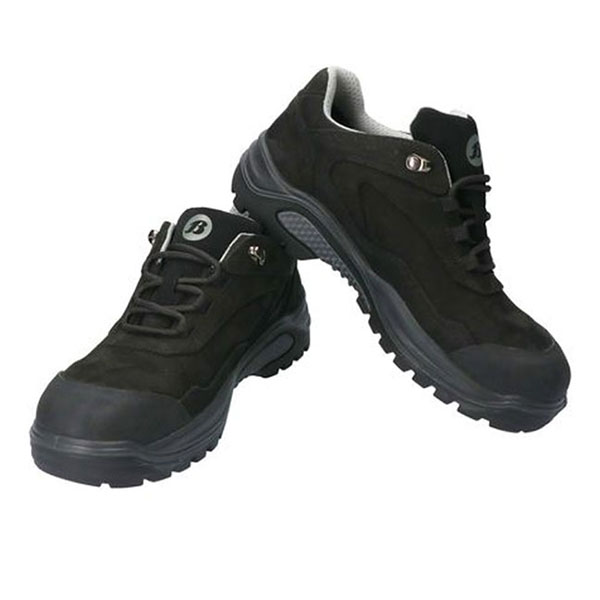 |
Black Bata Nubuck Traxx ESD Safety trainer shoe
One of the most comfortable trainers we have ever sold, this wide fitting low-top trainer is from the Traxx Collection by Bata, the Safety Shoe specialists with over 100 years’ experience of protecting and supporting your feet...
[View product] |
8. Diabetes
The NHS estimates that 5.6 million people in the UK are living with diabetes and rates are rising fast. Diabetes, a chronic disease of high blood sugar levels, can result in blood vessel and nerve damage (peripheral neuropathy) as well as organ damage. Reduced sensation, in this case in the feet, means that sores or injuries can easily go unnoticed. Pressure on the feet can also restrict blood flow and exacerbate the problem.
Look for: Multiple width fittings, deep, wide toe boxes, protective padding which does not squeeze the foot.
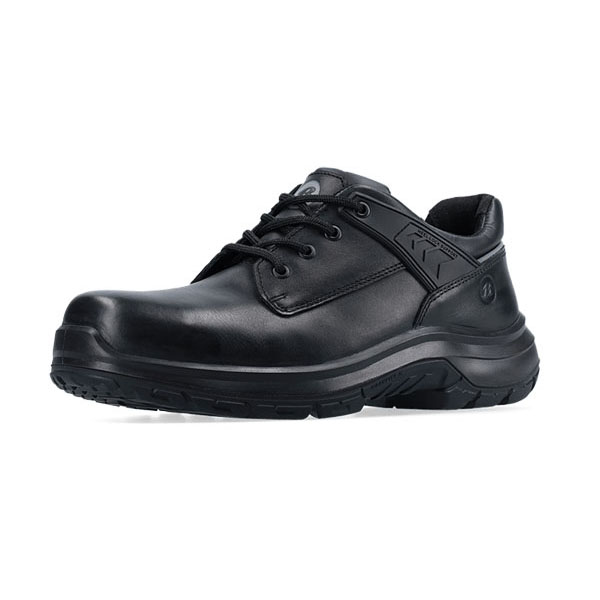 |
Bata Enduro Gibson Extra Wide Safety Shoe
The Bata Walkline range is one of Anchor’s best sellers. Indeed 94% of people report Walkline is more comfortable to wear throughout the day and a 60% reduction in foot and knee problems with Walkline shoes...
[View product] |
9. Plantar Fasciitis
Plantar fasciitis is a common condition causing pain on the bottom of the foot, specifically in the heel and arch. It's caused by inflammation and stress on the plantar fascia, a thick band of tissue that runs along the sole of the foot, and is common in workers who stand or walk for long periods of time.
Look for: padding, othotic insoles to offer additional cushioning, good shock absorption, memory foam heel inlays.
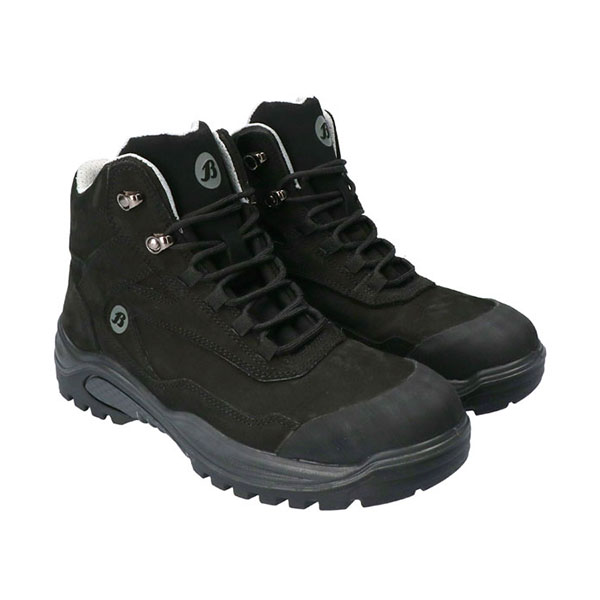 |
Black Bata Nubuck Traxx ESD Safety trainer boot
Wide fitting, the shoe also has an elevated toe, both features of which are great options for users who work long hours or have foot problems. The sole is constructed using Bata QuattroTech®-TPU technology to allow great flexibility, cushioning and shock absorption...
[View product] |
.jpg) |
Superior fit inlay soles
Designed to give you extra cushioning for comfort, the superior fit inlay soles are ideal for a multitude of working environments...
[View product] |
.jpg) |
Medical Fit Heel Inlay Soles
The Medical Fit inlay soles are designed to help alleviate and prevent heel issues like tendonitis and heel spur. Alongside offering as much comfort as possible with its padded forefoot and having shock-absorbing properties...
[View product] |
10. Smelly feet!
Rated the one of the worst smells known to man, worse even than bad breath, bromhidrosis, or excessively smelly feet, is a common condition caused by sweat and bacteria. Frequently a source of acute embarrassment, the main culprit is a buildup of sweat and bacteria on the feet, often exacerbated by unsuitable shoes. Wearing breathable shoes/insoles will allow the build up of moisture to disperse and prevent the breakdown of bacteria which causes the smell.
Look for: Breathable linings, antibacterial properties, airflow. Natural breathable materials.
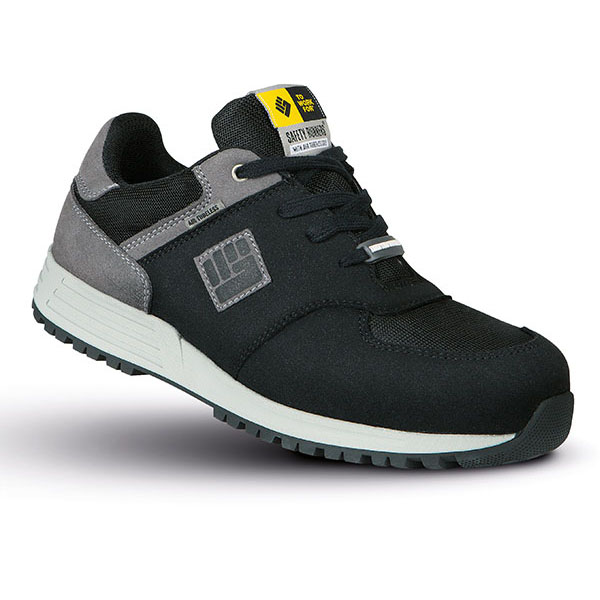 |
ToWorkFor Air Tubeless ESD Black Trainer
Air Tubeless is a patented technology used in running shoes. A new exclusive sole technology biomechanically tested by INESCOP...
[View product] |
Remember: Comfortable, supported feet will lead to fewer long term skeletal issues, fewer slips, trips and falls, fewer production delays and a happier workforce! Make sure your business benefits from making informed and expert footwear choices, with advice from our specialists.